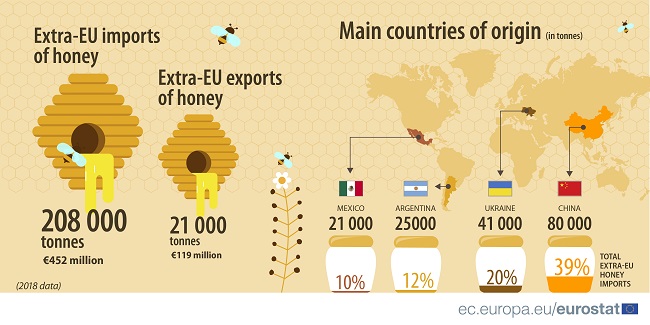Analytics, EU – Baltic States, Markets and Companies, Statistics
International Internet Magazine. Baltic States news & analytics
Tuesday, 23.04.2024, 23:13
Where does our honey come from?
 Print version
Print versionGermany, the largest importer of honey
In 2018, 60 000 tonnes of honey were imported to Germany from non-EU Member States (29% of total extra-EU imports of honey). This makes Germany the largest EU importer of honey from non-EU countries, ahead of the United Kingdom (45 000 tonnes, 22%), followed by Belgium (22 000 tonnes, 11%), Poland (21 000 tonnes, 10%) and Spain (17 000 tonnes, 8%).
China, the main origin of imported honey
Imports of honey from non-EU countries came mainly from China (80 000 tonnes, or 39% of total extra-EU honey imports), ahead of Ukraine (41 000 tonnes, 20%), followed by Argentina (25 000 tonnes, 12%), Mexico (21 000 tonnes, 10%), and Chile (8 000 tonnes, 4%).

Hungary, Belgium and Spain, largest honey exporters
In 2018, 137 000 tonnes of honey were traded among the EU Member States. Hungary exported to other EU Member States 20 000 tonnes of honey in 2018 (14% of total intra-EU exports of honey). This makes Hungary the largest intra-EU exporter of honey, closely followed by Belgium (19 000 tonnes, 14%) and Spain (18 000 tonnes, 13%), ahead of Germany (16 000 tonnes, 12%) and Poland (15 000 tonnes, 11%).
This news item marks World Bee Day (20 May).








 «The Baltic Course» Is Sold and Stays in Business!
«The Baltic Course» Is Sold and Stays in Business!

